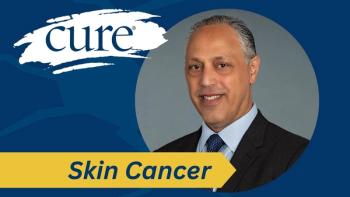
Jakafi Continues to Progress in Treatment of Acute Graft-Versus-Host Disease
Two studies showed that Jakafi has high response rates with patients with GVHD, making the FDA give the drug a breakthrough therapy designation.
Jakafi (ruxolitinib) was given a breakthrough therapy designation by the FDA for treatment of patients with acute graft-versus-host disease (GVHD), according to Incyte, one of the developers of the JAK1/JAK2 inhibitor.
The designation was based on two small studies demonstrating high response rates with Jakafi in patients with GVHD. Both studies were presented at the 2015 ASH Annual Meeting.
“Receiving breakthrough therapy designation from the FDA recognizes the severe nature of acute GVHD, the clear unmet medical need of these patients, and the potential, based on clinical evidence to-date, for Jakafi to address the urgent needs of patients with this life-threatening disease,” Steven Stein, chief medical officer at Incyte, said in a statement. “We are committed to working closely with the FDA in an effort to bring Jakafi to patients with GVHD as soon as possible.”
One of the studies the FDA reviewed was a retrospective analysis of 95 patients who developed corticosteroid-refractory (SR) acute (a) or chronic (c) GVHD following allogeneic hematopoietic cell transplantation for a hematologic malignancy. Fifty-four patients had SR-aGVHD (grade 3 or 4) and 41 patients had SR-cGVHD (moderate or severe).
The patients, who were from 19 stem cell transplant centers in the United States and Europe, all received Jakafi as salvage-therapy. The median number of prior GVHD treatments was three for both the SR-aGVHD (range, one to seven) and SR-cGVHD (range, one to 10) patient groups. Median follow-up was 26.5 weeks (range, three to 106) and 22.4 weeks (range, three to 135), respectively.
The overall response rate was 81.5 percent (44 percent) in the SR-aGVHD group and 85.4 percent (35 patients) in patients with SR-cGVHD. The median time to response was 1.5 weeks (range, one to 11) and three weeks (range, one to 25), respectively. Patients with SR-aGVHD had a six-month overall survival (OS) rate of 79 percent and the six-month OS was 97.4 percent in the SR-cGVHD arm.
Among patients who responded to Jakafi, GVHD relapse occurred in three (6.8 percent) patients in the SR-aGVHD group and two (5.7 percent) patients in the SR-cGVHD arm. In the overall population, relapse of the primary malignancy was experienced by five (9.3 percent) and one (2.4 percent) of patients with SR-aGVHD or SR-cGVHD, respectively.
During Jakafi therapy, cytopenia occurred in 55.6 percent (30 patients) of the SR-aGVHD arm and 17.1 percent (seven patients) of the SR-cGVHD arm. Rates of CMV reactivation were 33.3 percent (18 patients) and 14.6 percent (six patients), respectively.
The second study the FDA considered for the breakthrough designation involved 16 patients with hematologic malignancies who received transplants and developed quiescent (12 patients) or de novo (four patients) severe (NIH criteria) steroid-dependent cGVHD. The transplants included unrelated donor (14 patients), matched sibling (two patients), blood (15 patients) and marrow (one patient).
Areas affected by the cGVHD included the skin (16 patients), eyes (12 patients), mouth (10 patients), GI tract (eight patients), lungs (four patients), liver (three patients) and musculoskeletal system (three patients). The cGVHD was steroid dependent, with a 24-month (range, six to 53) median duration of continuous exposure to steroids for cGVHD.
Patients received Jakafi at 5 mg twice daily as second- (four patients), third- (seven patients), fourth- (four patients) or fifth-line (one patient) salvage therapy. The Jakafi dose was raised to 15 mg/daily for four patients and 20 mg/daily for three patients due to patient weight, physician preference, flare of cGVHD following initial response related to halting immunosuppression or temporary perioperative hold of Jakafi. Patients had a six-month (range, one to 14) median duration of Jakafi treatment.
Patient responses to Jakafi were observed at median of 14 days following the start of treatment. The researchers observed complete resolution of clinical manifestations of cGVHD in patients’ lungs, mouth, skin, liver, musculoskeletal system and GI tract.
Ten patients were able to discontinue prednisone at a median of 72 days (range, 31 to 120) after starting Jakafi. Two patients reduced prednisone to physiologic doses and the other four patients were tapering prednisone at the time of the data analysis.
The FDA’s breakthrough designation is meant to expedite the development of therapies that offer substantial benefits over existing options. Under the program, a rolling submission of data is allowed along with more communication with the FDA.
Jakafi is currently approved by the FDA as a treatment for patients with polycythemia vera who are intolerant of or have an inadequate response to hydroxyurea. The JAK1/JAK2 inhibitor also has an FDA-approved indication for the treatment of patients with intermediate or high-risk myelofibrosis.
Incyte reached an agreement with Lilly in March 2016 giving Incyte exclusive rights to develop and market Jakafi for GVHD in the United States. In April 2016, Incyte and Novartis reached an agreement allowing Novartis to develop and commercialize Jakafi for GVHD in countries outside of the United States.




